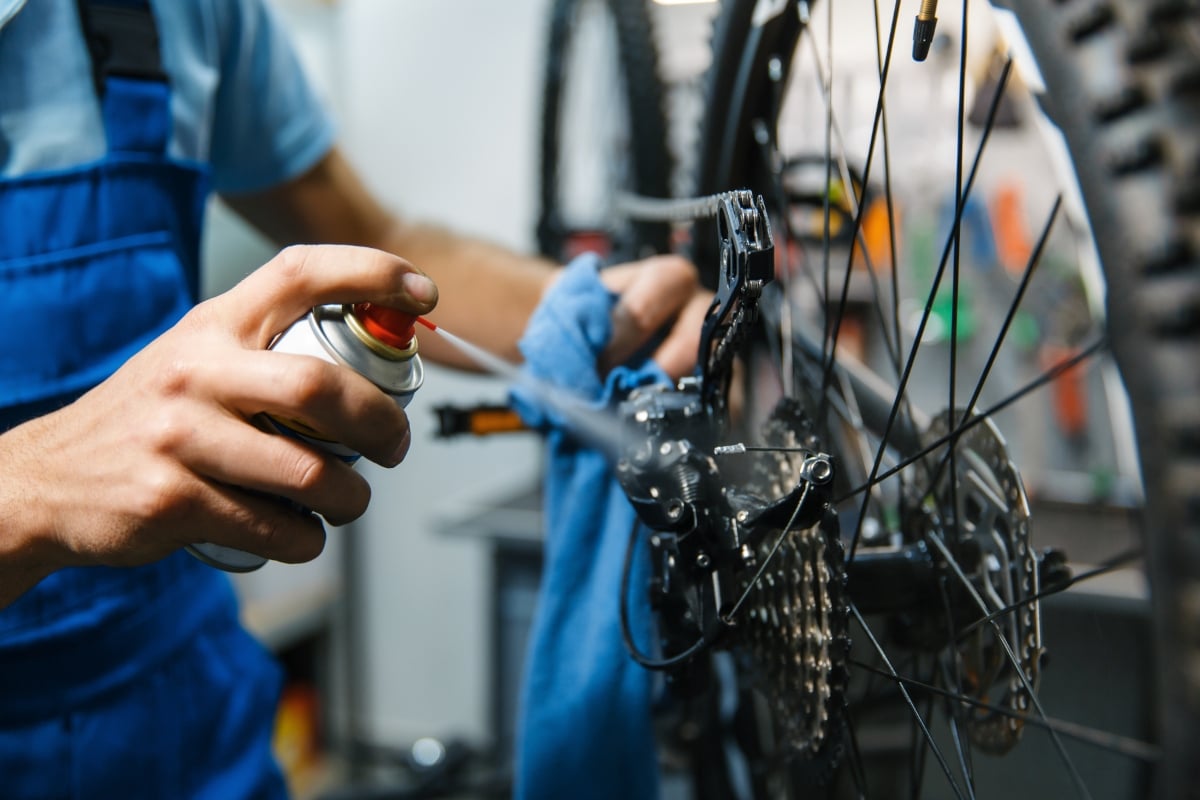Taking regular care of the things you own is the best way to keep them in good shape and extend their life. Bikes are no exception – they need regular maintenance and health check-ups to make sure they are both in good stead and safe to use. Taking care of your bike extends its lifespan, ensures it performs at its best and prevents unnecessary repairs or more significant expenses if you need to replace it too soon.
However, many people overlook bike maintenance. This can be for many reasons, but people often find it intimidating, especially if they're new to cycling or unfamiliar with the tools and tasks. A few simple tasks should be done regularly and are relatively easy to do. You can take your bike to a bike doctor, of course, but it's always a good idea to become more familiar with your vehicle and learn how to do some quick maintenance at home.
In this post, we'll cover some basic maintenance tasks which should be done with regularity by every cyclist. We hope reading this will give you the knowledge and confidence to keep your bike in top condition.
Cleaning and Lubrication
Keeping your bike clean is the most basic task you should be doing with regularity. This is especially important if you ride in wet weather and your bike gets a lot of dirt and water on its parts. The issue with this is that corrosion can start eating away at your bike; dirt can clog parts, and, generally speaking, your bike will begin to rust and wear down a lot quicker from all the friction.
Some bike components will be easy to clean, like your frame. You can use soap (or a special bike cleaner if you have one) and water and wipe it with a damp cloth or even a dry one if you've just parked after riding in the rain.
Other components, like the drive train, will need more attention. Keeping your bike clean and lubricated is especially important for this part of your bicycle. Metal rubbing against metal and mud is a sure way to shorten the life of your bicycle and cost you money by either having to replace parts sooner or the whole bike. To prevent this from happening, clean your drivetrain often. All you need is some rags, a cleaning brush (an old toothbrush works great), a degreaser, and bike oil.
Do your best to remove the mud and dirt from all the parts. Use the cloth for the more open spaces and the brush for the hard-to-get ones. To clean your chain, you can use a rag and some degreaser. When everything is dry and clean, start spinning the cranks backwards and apply drops of bike oil on every link of your chain. Don't over-grease it. However, excess lubricant will attract dirt and cause component damage too. So, if there is any excess, wipe it away.
You can clean your chainrings and rear cassette by scrubbing them with a brush and some degreaser while moving the pedals. You should occasionally apply bike oil to your break and derailleur levers, cables and assemblies.
Tyre Check-Ups
The next thing you should check before every ride is your tyres, as they can really affect how your bike rides. All tires have recommended pressure which should be inscribed on the tyre itself. Ideally, this is what you should aim for when pumping your tyres up, as riding your bike with your tyres pumped too much below or above this recommendation can cause them to fail. Properly inflated tyres help prevent flats and make your ride more comfortable.
The best way to service your tyres is by having a pump with a pressure gauge. This allows you to both pump your tyres and check their current pressure. You can also go by feel and squeeze your tyres, which is obviously less accurate.
You may also consider learning how to change a flat tube. Many shops organise free classes on bike maintenance, and flat tyres are one of the most often sought-after skills as they do happen quite often.
Keep Things Tight
Next on your checklist should be screws, bolts and nuts – they should periodically be checked to see if they're still intact and in place and should be tightened if loose. This is important, as loose parts can get damaged more easily, experience more wear and tear and can be dangerous on the road.
Try to keep everything tight but be careful not to overtighten them, as this can lead to damage and failure. On some bike parts, there is a maximum torque limit written on them; if your bike has that, follow those limits.
Breaks Inspection
Another critical component of your bike is the brakes. They keep you safe in traffic and should never be left unattended. Breaks should be checked regularly to make sure they engage properly and smoothly. You should squeeze the front, and back breaks separately to make sure both work. If you notice that you have to pull all the way and hardly anything happens, you probably have to adjust your brake pads closer to the rim.
Breaks and brake pads should also be kept clean from dirt and oil, so when doing your cleaning, you may need to pay some attention to them too.
Regular maintenance is crucial when it comes to preventing wear and tear and more serious damage. The other vital part of the equation is safe and secure bike storage. Bicycle shelters protect against harmful weather conditions that can damage bikes, which is much needed in a climate like the UK's. Keeping bikes dry and in good condition extends their lifespan and reduces maintenance costs for anyone cycling to work.
Contact us today to learn more about our bike shelter solutions and how we can help you choose the right one.
